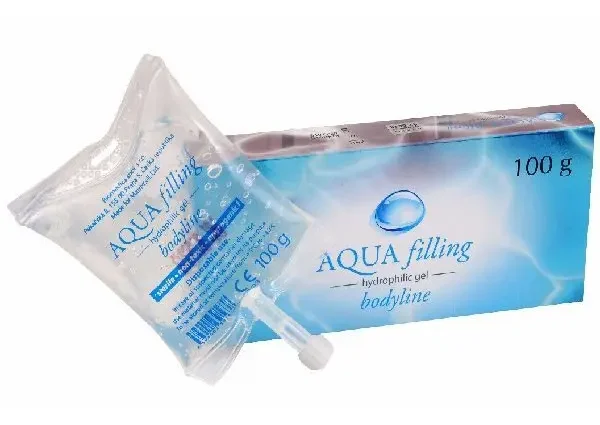Contents
Holidays give us the opportunity to have a healing communion with the water element: swimming – in the pool or in the sea – literally washes away stress and fills us with fresh energy. Why not combine the useful with the pleasant by doing some tonic exercises in the water?
We invite you to try a set of five exercises developed by Alain Lambert, a fitness trainer and psychologist, the creator of a new direction of water gymnastics “aquafilling”. “The main principle of aquafilling is to develop the ability to control your body and accumulate energy,” says Alain Lambert. – This technique was developed in collaboration with kinesitherapists and sports doctors, all of its exercises are perfectly balanced with each other. In particular, the speed of execution and the number of repetitions of movements are calculated so that you can get the maximum benefit from the natural resistance of water.
This complex is suitable for those who want to relax, tone up, become slimmer, as well as for the recovery and training of professional athletes. Each exercise consists of four phases: mastering the basic movement; gradual increase in rhythm to evenly warm up the muscles; maximum speed phase to achieve the highest score; recovery phase to bring the heart rate back to normal.
1. Warm up
Body position: go into the water up to the neck, take a standing position.
An exercise: put one foot forward, the other back; swap them, trying to slide your fingertips along the bottom. Your arms should move like you’re running. Try not to tear off the bottom of the foot, exposed back; shoulders should remain under water. Don’t bend your fingers.
Ideal Rhythm: increase the pace until you can switch legs in one second. Repeat the exercise 50 to 100 times.
Effect: we prepare the body for the following exercises. With an increase in the pace, the pulse quickens and the blood supply to the whole body improves. Exercise allows you to gradually warm up the muscles and joints.
Recovery exercise: take the position of the rider and at the same time with the body and pelvis turn both arms extended forward alternately to the right and left.
2. Exercise for the hips and buttocks
Body position: go into the water up to your neck, feet shoulder-width apart, put your hands on your waist, straighten your back, rise on your toes.
An exercise: perform “scissors” – cross your legs, then quickly return them to their original position, sliding along the bottom with your fingertips. Try to keep your feet parallel to each other, tighten your buttocks and pull in your stomach.
Ideal Rhythm: very fast – with an interval of half a second between the movements of each leg. Repeat 30 to 50 times.
Effect: strengthening the muscles of the legs, thighs and buttocks. The streams of water generated by the movement of the legs massage the buttocks from the outside and inside – an excellent technique for combating cellulite.
Recovery exercise: to relax, bend the right leg, place the heel on the knee of the left leg and make five rotational movements with the bent leg. Repeat the same with the left leg.
3. Strengthen the waist
Body position: go into the water to chest level, stretch both arms forward, squeeze your palms.
An exercise: make turns of the torso with outstretched arms to the right and left. To increase the range of motion, you can tear off the heel of the opposite leg from the bottom. Try not to bend your knees, follow the movement of your hands with your eyes, the thumbs of both hands should look out of the water.
Ideal Rhythm: the faster, the more noticeable the results will be. Perform 30-50 turns in each direction.
Effect: strengthening the lumbar muscles – for a thin waist and elasticity of the buttocks. Try not to strain the abdominal muscles – here they are exposed to a natural load.
Recovery exercise: not required, the load on the heart and breathing is minimal.
4. Tighten the stomach
Body position: go into the water up to your chin, put your feet together, stretch your arms to the sides at shoulder level.
An exercise: first, “group” with your whole body, bending your knees, pulling them up to your chin and trying to reach your feet with your hands. Take the starting position and immediately “group” again. Try to keep your shoulders under water, and keep your legs constantly closed; do not push off with your feet from the bottom – the abdominal muscles should actively work.
Ideal Rhythm: repeat the movements with an interval of one second. Do this exercise 20-50 times.
Effect: the abdominal and pectoral muscles, as well as the shoulders, work – and all this without the load on the lower back, inevitable when exercising “on land”.
Recovery exercise: not required, as the qigong stretch that follows this exercise is designed to relax the muscles.
5. Stretch
Body position: stand so that your hands are on the surface of the water. Pull them apart.
An exercise: as you exhale, sit down, bringing your outstretched arms in front of you with a sharp movement. Straighten your back as you inhale, spreading your chest wide and bringing your closed fingers closer to your chest. Extend your arms out to the sides again, returning to the starting position. Try to breathe evenly and deeply.
Ideal Rhythm: this exercise should be done very slowly.
Effect: the exercise was borrowed from the qigong technique – such sipping normalizes breathing, promotes energy concentration, frees our muscles from toxins and straightens the back muscles.
Recovery: after this exercise is not required.










